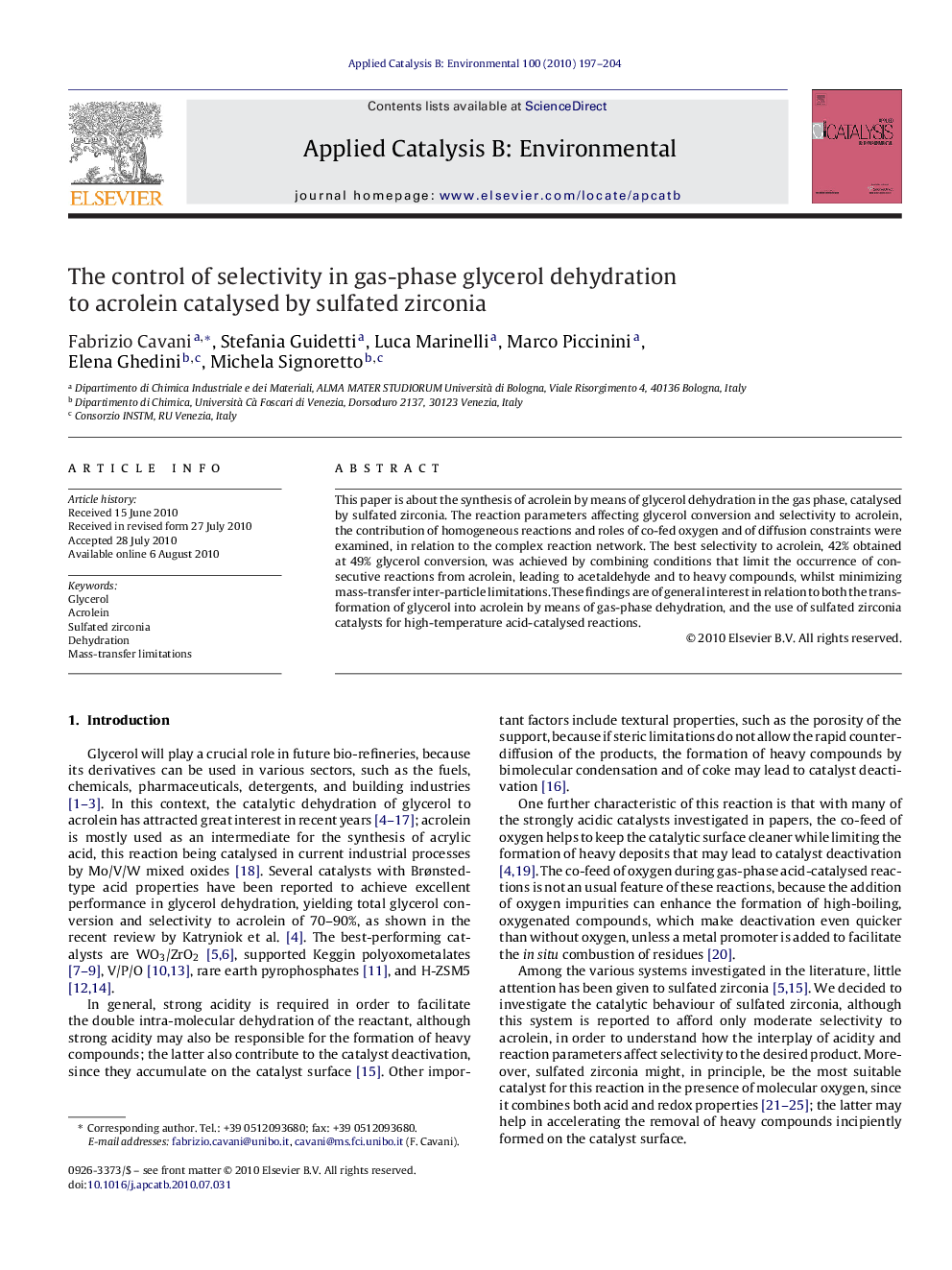| کد مقاله | کد نشریه | سال انتشار | مقاله انگلیسی | نسخه تمام متن |
|---|---|---|---|---|
| 47160 | 46462 | 2010 | 8 صفحه PDF | دانلود رایگان |

This paper is about the synthesis of acrolein by means of glycerol dehydration in the gas phase, catalysed by sulfated zirconia. The reaction parameters affecting glycerol conversion and selectivity to acrolein, the contribution of homogeneous reactions and roles of co-fed oxygen and of diffusion constraints were examined, in relation to the complex reaction network. The best selectivity to acrolein, 42% obtained at 49% glycerol conversion, was achieved by combining conditions that limit the occurrence of consecutive reactions from acrolein, leading to acetaldehyde and to heavy compounds, whilst minimizing mass-transfer inter-particle limitations. These findings are of general interest in relation to both the transformation of glycerol into acrolein by means of gas-phase dehydration, and the use of sulfated zirconia catalysts for high-temperature acid-catalysed reactions.
Various reaction parameters and phenomena affect glycerol conversion and selectivity to acrolein, in relation to the complex reaction network. The contribution of homogeneous reactions, the role of diffusion constraints, and of catalyst deactivation due to heavy compounds accumulation are examined.Figure optionsDownload as PowerPoint slideResearch highlights▶ When sulfated zirconia is used as the catalyst for the gas-phase dehydration of glycerol, several factors contribute to lower the selectivity to the desired product, acrolein. ▶ The main by-products are heavy compounds, that form by both parallel reaction (directly on glycerol) and consecutive transformation (on acrolein). Heavy compounds contribute to catalyst deactivation. ▶ The use of co-fed oxygen limits catalyst deactivation, and decreases the formation of heavy compounds. With oxygen in feed, there is a relevant formation of COx, that may derive from a possible catalytic oxidative contribution of sulfuric groups. ▶ Heavy compounds form, even under aerobic conditions, because of inter-particle mass transfer limitations hindering diffusion of glycerol and counter-diffusion of products. ▶ However, through a strict control of reaction conditions, that is, by using conditions that limit the formation of the inter-particle boundary layer, and by limiting consecutive reactions on acrolein, it is possible to avoid the formation of heavy compounds.
Journal: Applied Catalysis B: Environmental - Volume 100, Issues 1–2, 11 October 2010, Pages 197–204